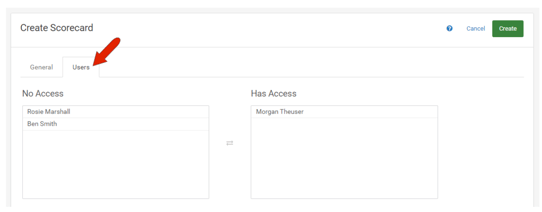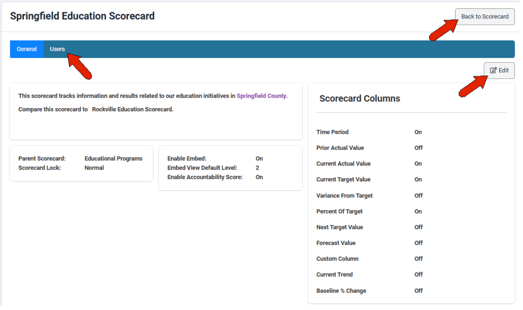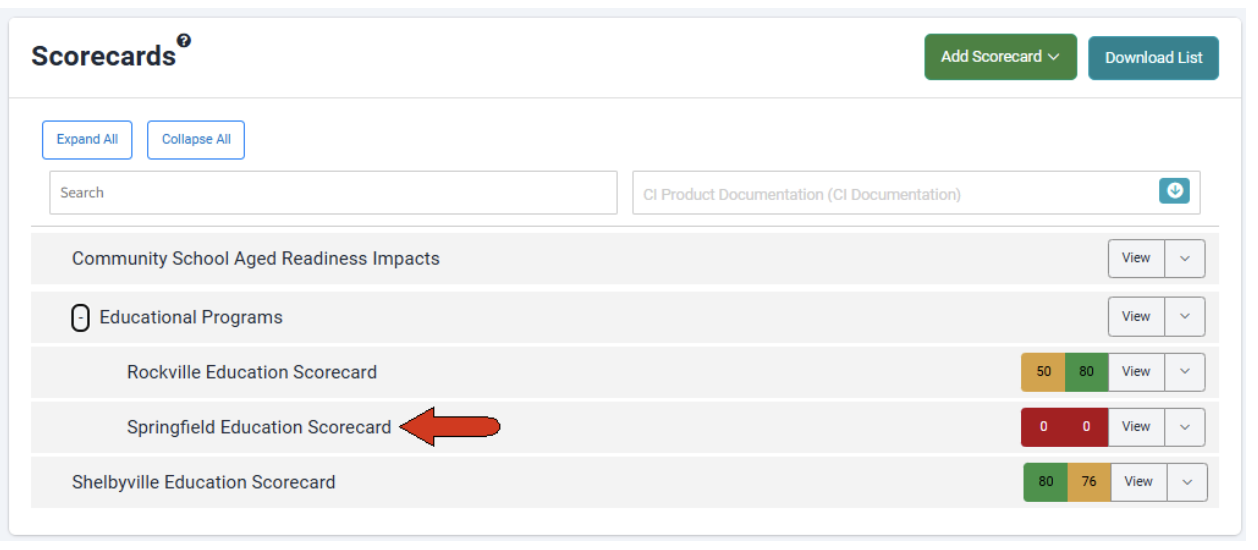Creating a Scorecard
Note: This article covers creating a scorecard from scratch. There are also several scorecard templates you can look through, which may be suitable for your organization, after editing as needed. You can also import scorecard objects using the Scorecard Wizard.
A scorecard is a collection of one or more containers, each of which can hold either a result or program plus its associated measures. A result container typically includes one or more indicators, while a program container typically contains one or more performance measures.

Note: “Result,” “program,” “indicator,” and “performance measure” are default terms. Admin users can modify or add terminology to suit your methodology or preferences.
All Scorecard objects can be created on the fly, and once created, can be used in other scorecards and containers. All scorecard objects can also be copied.
To create a new scorecard, choose Objects / Scorecards from the top menu.

This opens the Scorecards list. At the top right, click Add Scorecard / Add New Scorecard.

Note: The other option in this dropdown menu is Scorecard Wizard, which is an import process.
Keep in mind that any initial details you set up for a scorecard can be changed at any time later, by editing the scorecard.
In the General tab, assign a name and an optional description. All HTML editing tools are available, such as text formatting, hyperlinks, bullets or lists, images, etc.

Below the Description field are several additional options, starting with Parent Scorecard.
A scorecard can be configured as stand-alone (no parent scorecard) or with “parent-child” hierarchy. The hierarchy setup typically involves using a blank scorecard as the parent that contains multiple child scorecards. In this example, the scorecard will be added to the broader “Educational Programs” category of scorecards.
You can also choose whether this scorecard can be embedded in a website or social media platform, and whether the accountability score will be enabled.

The last step is to choose the scorecard data columns that will be displayed. There are 11 columns to choose from, and up to six can be displayed at a time, though typically you’ll only need two to four. You can always change scorecard columns later, when editing the scorecard, if you want to present data in different ways.

Note: Admin users can configure which columns are available, and which are enabled by default.
In the Users tab, you can select the users who can access this scorecard. If the Has Access field is left empty, then all users will have access. By default, admin users automatically have access to all scorecards. User roles, as well as scorecard permissions, can be set in the Users list (admin users only).

To finish, go back to the top and click Create.

This brings you to the scorecard editing page, open to the General tab. You can click Edit to change any fields in this tab, or click Users to change user access. Clicking Back to Scorecard will take you to the scorecard view.

Below the summary and columns is the Containers section, where you can add containers for your results and indicators, and/or programs and performance measures. Containers can be created from scratch or you can bring in existing containers.

The new scorecard will now appear on the Scorecards list. If the scorecard has a parent, it will be listed under that parent.
